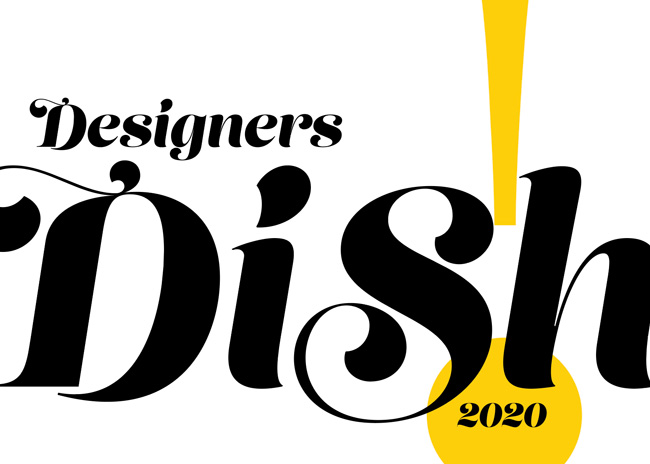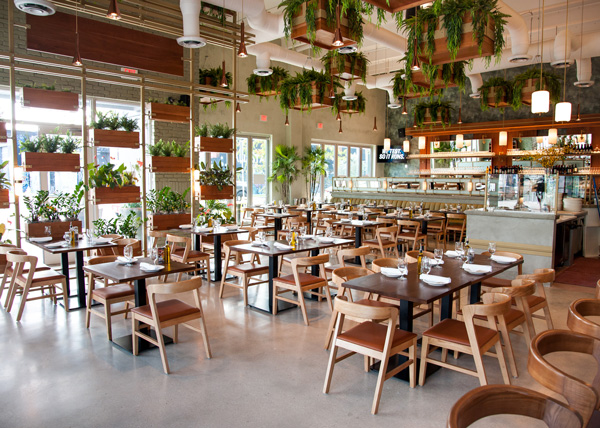While there may be plenty of behind-the-scenes complexities, success for any bar comes down to one simple thing: a positive guest experience leads guests to spend money. A well-designed and equipped bar can make a difference.
Layout and Logistics
Laying out a bar requires balancing the available space and budget with the bar’s anticipated volume and functional requirements.
Efficiency depends on how many drinks bar staff can make in an allotted period of time. For that reason, the goal in designing the space behind the bar is to create a station that minimizes staff steps and movement. Workstations should be self-contained to get drinks out as quickly as possible, meaning bartenders should not share equipment aside from sinks so long as space allows.
Also, take into account bartender reach, especially overhead and when bars have duplicate stations. Right-handed bartenders pick up glassware and handle liquor with their right hand and pour soda and scoop ice with their left hand, so place items accordingly.
The ice bin usually sits in the center of the workstation with the glasses to the left and POS station ideally located on the front bar. Situate insulated bins adjacent to the ice for easy access to precut garnishes like lemon and lime wedges. Bartenders most often access the soda gun from their left side. Mug and glass frosters, used to chill glasses for beer and martinis, are placed on either the front or back bar, depending on the needs of a given space.
Take into account the size of the underbar lineup. Units typically measure between 24 and 29 inches deep. Bar tops most often measure 24 inches deep and drink rails usually measure 4 inches wide and may include a perforated insert to provide easier draining and cleaning. Most bars are 42 inches high, with aisles measuring 36 inches wide.
Modular bar systems provide a heavy gauge frame that creates the die wall and the equipment supports for an operation’s underbar lineup. These are suitable for both new construction and remodels because modular bars are often factory assembled.
Consider what equipment and components are visible to patrons sitting at the bar. For example, if beer taps on the front bar are too close to customers, they can get splashed. By the same token, if the wait station is situated in close proximity to guests, it may negatively impact their experience.
Menu & Equipment
Determining the appropriate equipment package for a bar depends on its beverage menu, space and volume.
With beer and wine systems, operators have two options. The first type, direct draw, is a simple self-contained system with between one and four doors, a dispensing tower and beer and/or wine taps on top. Because these are typically located behind the bar, they require a dedicated spot.
The growing popularity of brewers supplying beer in one-sixth (or skinny) kegs makes it easier for establishments to offer a wide range of beers. With a diameter of about 9 inches, as many as four skinny kegs can fit into one door of a direct-draw cooler compared to one standard keg.
Larger operations with more extensive bar service may be best served by remote-draw beer and wine dispensing systems. Remote-draw systems house beverages in a dedicated walk-in cooler that is not located directly adjacent to the serving area. These systems use insulated trunk lines in the floor or ceiling to carry beer and wine from the containers in the cooler directly to the tap. The number of lines varies depending on the different types of beverages the operation serves.
In addition, separate lines circulate chilled glycol through the bundle to keep beer and wine cold. A separate refrigeration unit, referred to as a line chiller or power pack, utilizes a pump to circulate the glycol through the line set.
With a remote-draw system, the balance between the pressure and temperature must be maintained or beer can become overly carbonated and foamy and wine flavor can be compromised. The CO2 exchange during drafting also must remain consistent or beer can become flat over time. Also, the distance between the keg and tap determine how much pressure needs to be applied to get the beer and wine to properly tap. Remote-draw dispensers are more expensive and require more equipment and logistics when it comes to installing. The benefits with this type are that valuable space behind the bar is preserved and operators can offer a more extensive beer selection.
Wine dispensing systems with storage for bottles and kegs provide from one to three doors. These hold three 1/6 kegs in each tapping compartment and some models store up to 48 wine bottles. Another type has individual compartment temperature controls and storage drawers for up to 30 wine bottles. Under bar storage wine dispensing units have two compartments with independent temperature zones that fit two skinny kegs.
Backbar refrigeration tends to be pretty standard. Depending on the space, operators typically utilize a three- or four-door reach-in cooler. Coolers visible to customers may warrant glass doors for merchandising. Bars with substantial draft beer programs may wish to dedicate a freezer to making frosty mugs or even a glass froster. Sliding drawer dual-temperature wine chillers represent suitable options for bars with larger wine menus. These units prevent open bottles from sitting on the back bar and preserve the life of the bottle by keeping it in a controlled temperature environment.
Ice maker location and size requires consideration when specifying. More operators now choose to put in water spigots over ice bins to quickly melt leftover ice at the end of the night.
Those with craft cocktail programs may require dedicated freezer drawers for storing specialty ice or bin dividers to segment the different types. Popular shapes include 2-inch spheres or bullet-shaped ice. Operators can store specialty ice in a freezer at the bar, in a cold well or in an ice cream freezer. Traditional freezers are not recommended.
Behind the bar, there needs to be places to fill glasses and dump dirty glassware. A designated area for glassware drying is important, too.
Depending on space and local regulations, a bar’s dishwashing station may include a hand sink, three-compartment sink and/or an automatic glass washer that sanitizes with either chemicals or hot water. Hand sinks are typically located by the POS system between two bartending stations or by the bar’s entrance. Although three-compartment sinks are less expensive than glass washers, these take up 5 feet versus 2 feet for glass washers. Dish machines with newer technology capture steam so no separate vent is needed. Some operators will add a mop sink in this area for fast, easy cleanups.
Ancillary equipment may be necessary. For example, if the menu includes frozen beverages, a blender becomes necessary. Immersion blenders represent another option, as this equipment brings down the noise level of mixing drinks at the bar. Other equipment found behind the bar includes water dispensing systems for filtering and espresso machines.
Newer technology and equipment updates geared to enhance bar service include wine preservation systems, beer systems that fill glasses from the bottom, turbo or fast-flow taps, and table taps that can be used as an alternative to wall taps for self-service refills.
Service and Storage
When looking at speed of service, operators need to decide how many points of sale the bar requires.
Assess storage needs early in the project. A drainer with wells, both insulated and noninsulated, can hold beverage ingredients and garnishes for craft cocktails. Space for storing disposables will vary depending on the bar. Closed cabinets along the back bar can store towels, cocktail napkins and even keep back up liquor out of sight. Lockable storage may be necessary for securing liquor during off hours or after closing.
Liquor display shelves, which come in 12-inch increments provide storage for 12 to 36 bottles. Ideally, liquor should be close to the ice bin. This keeps bartenders facing guests rather than the backbar during service. Including a 1-foot shelf for soda bottles and a blender can serve as a landing platform for tools like shakers and stirrers. Because space under the front bar is valuable, it’s best to store serving equipment and bottles on the back bar. The back bar often contains extra glassware, a beer tap if needed and a refrigerator for extra storage.



